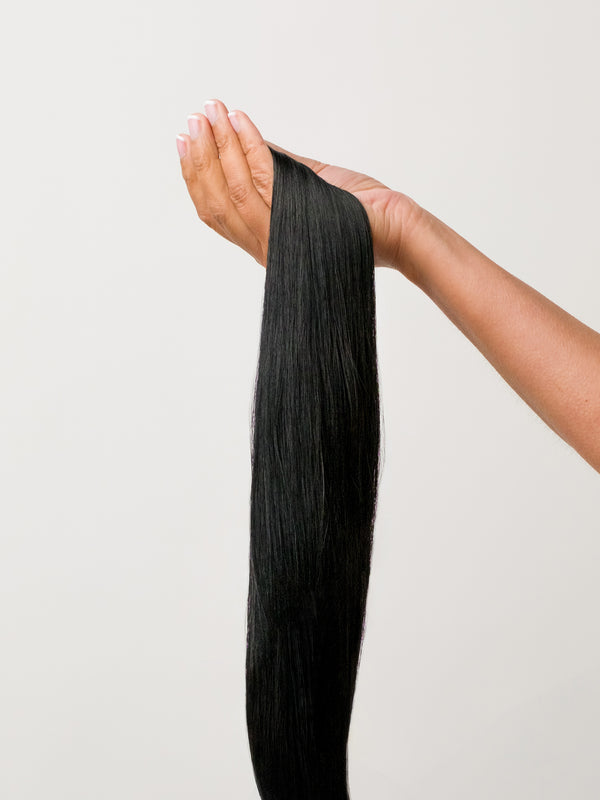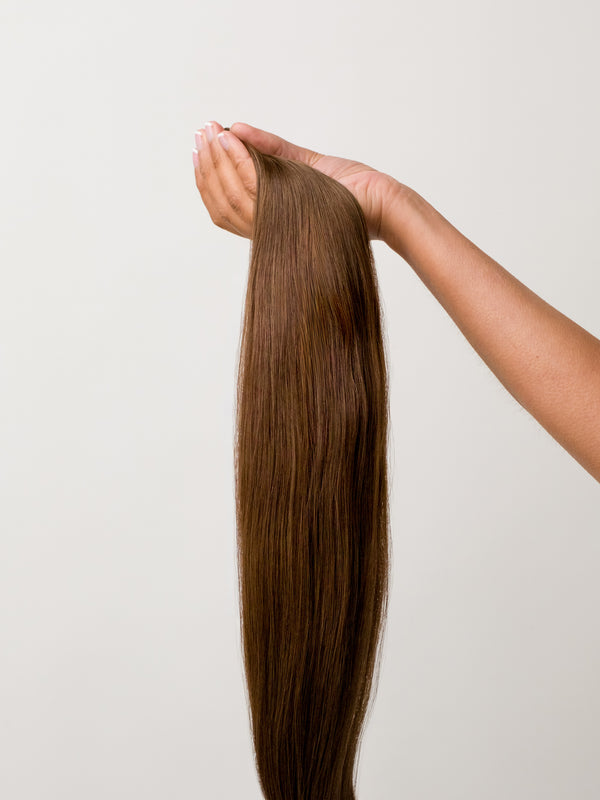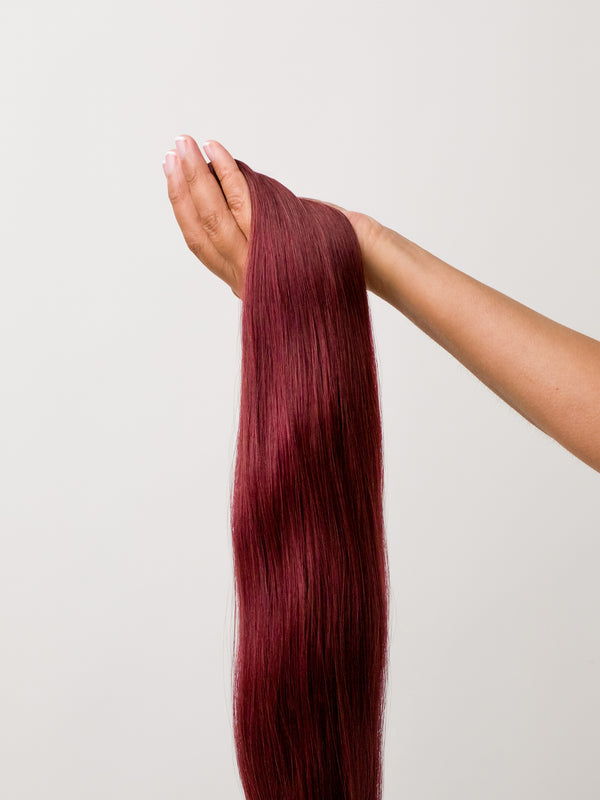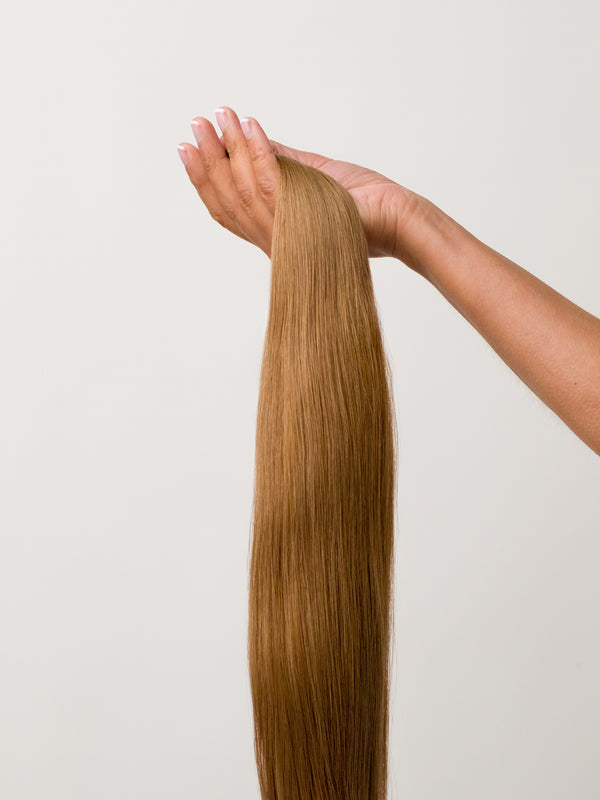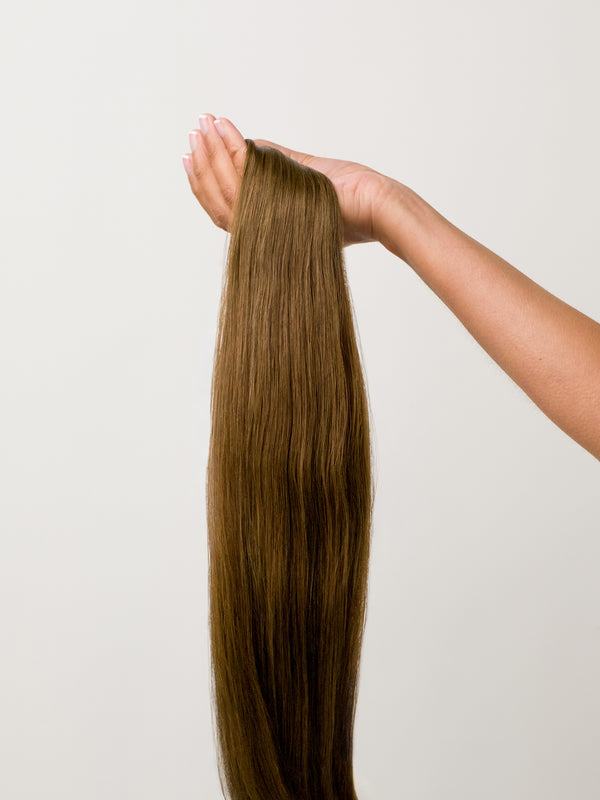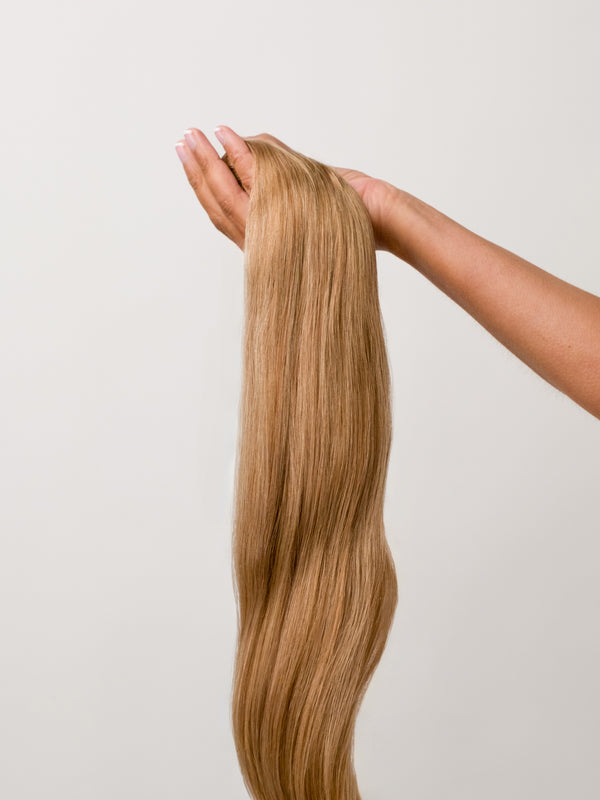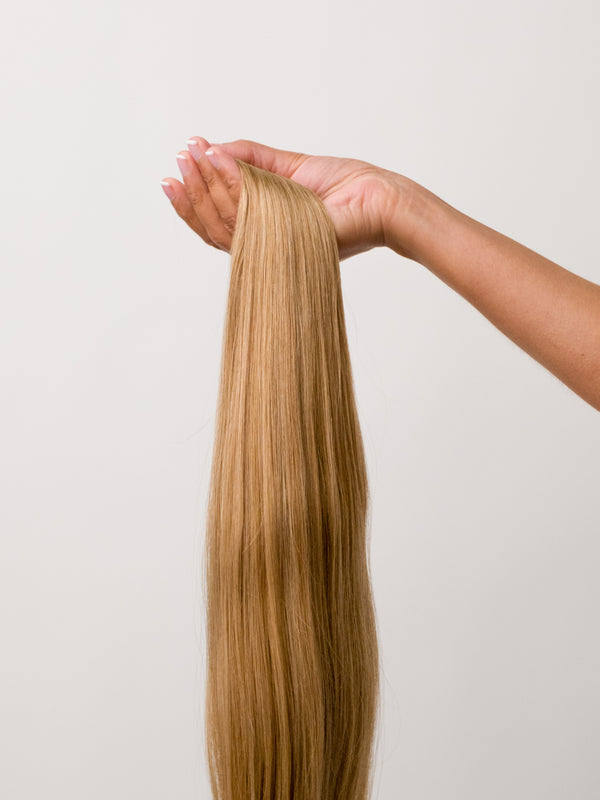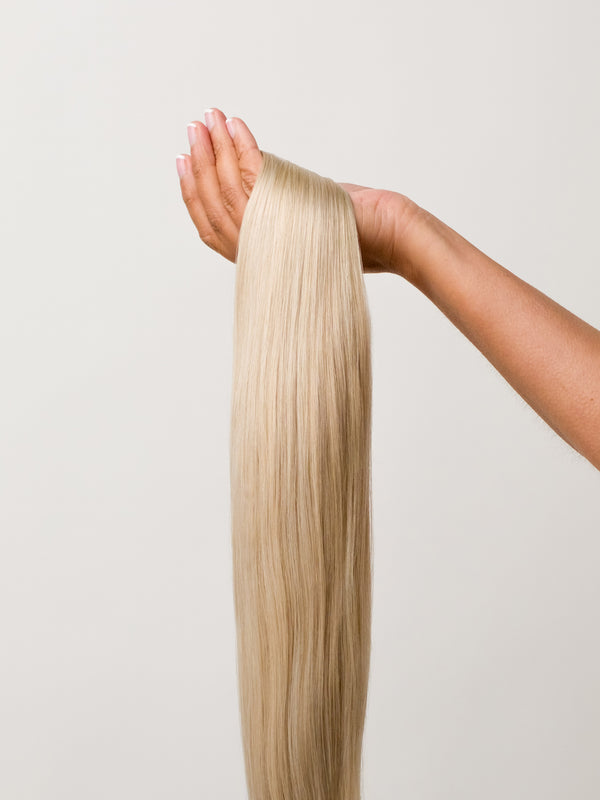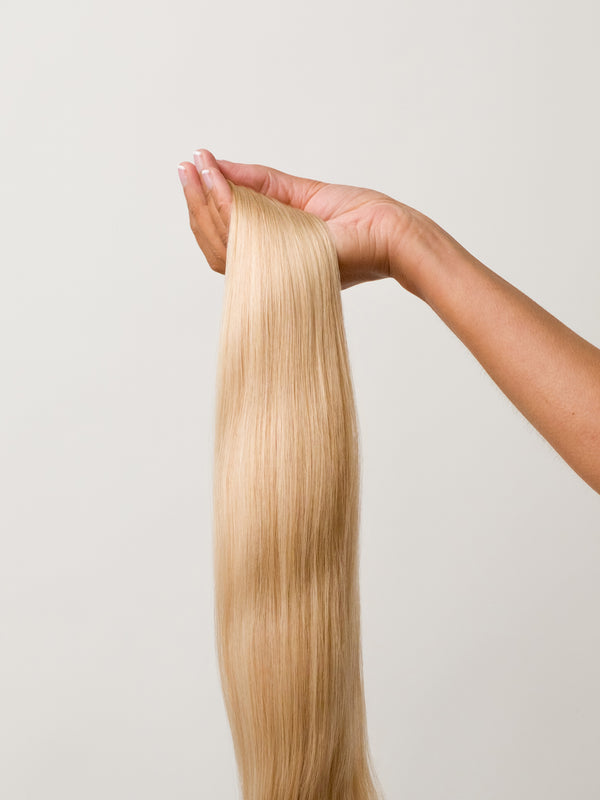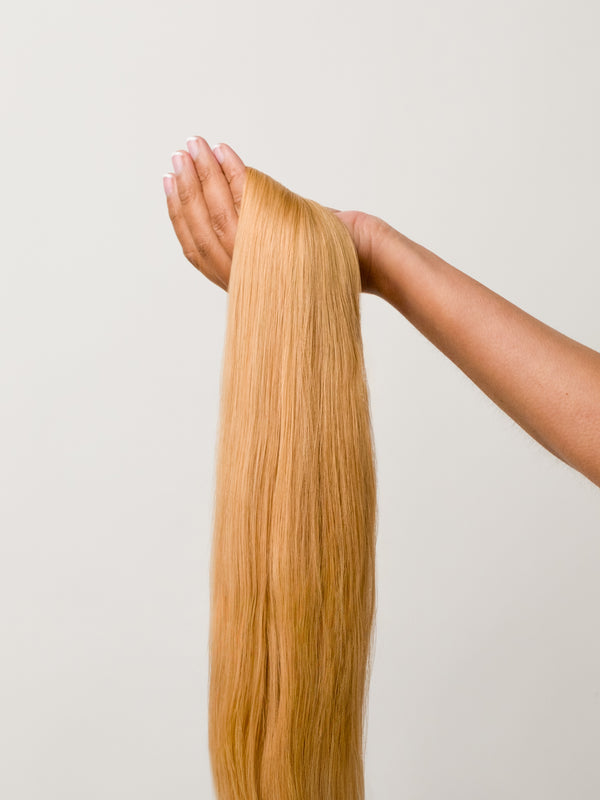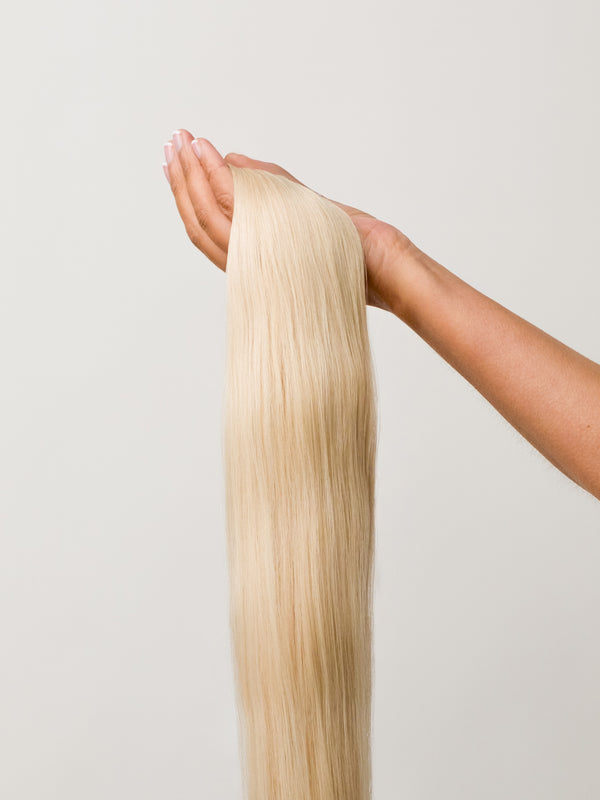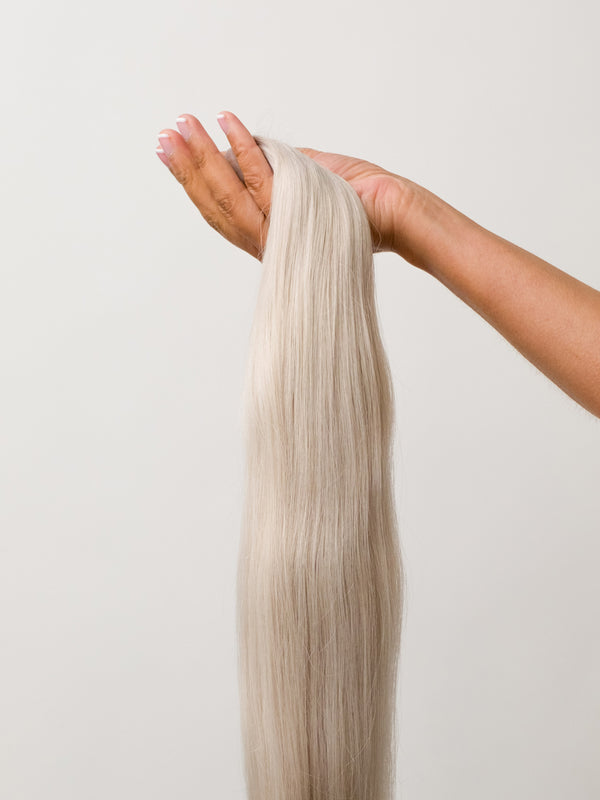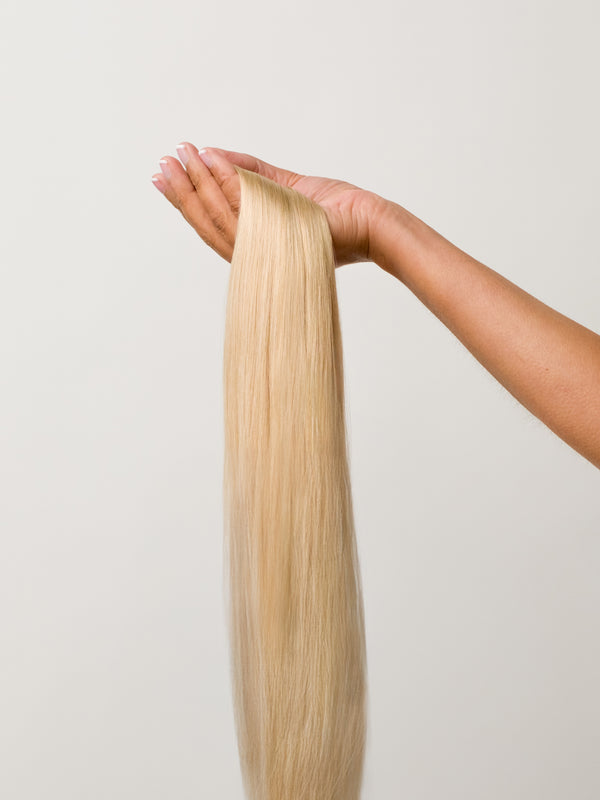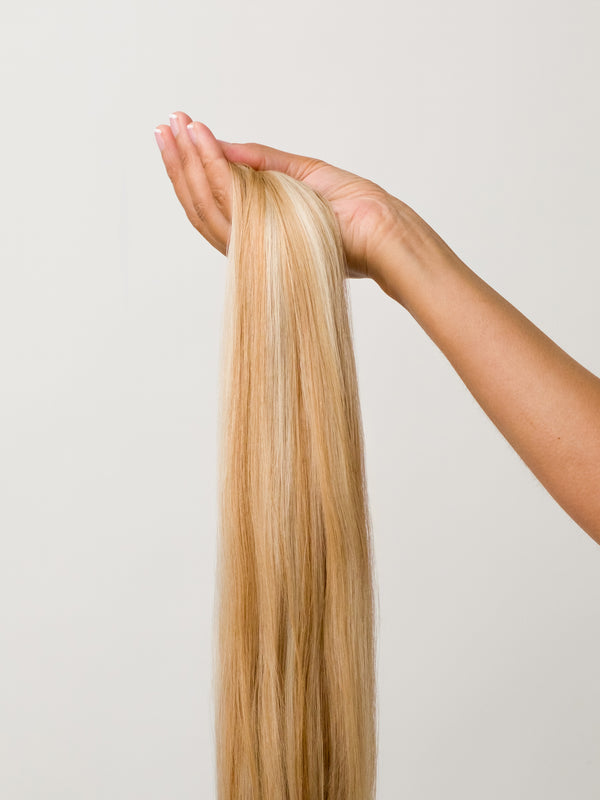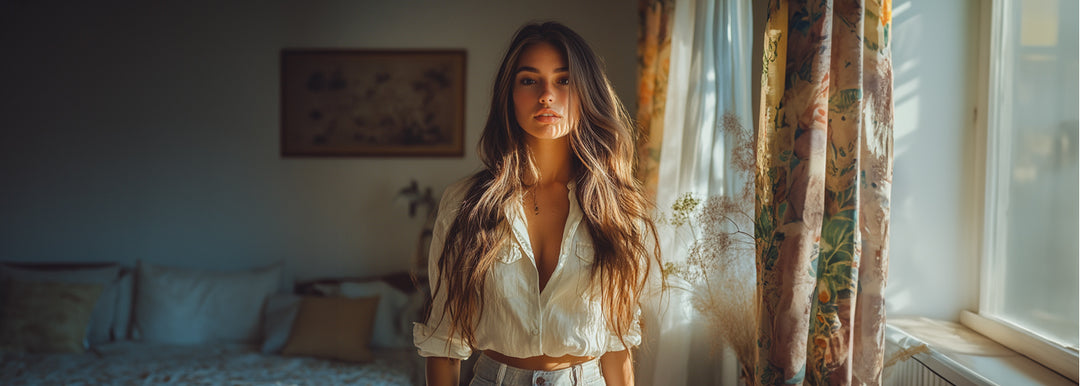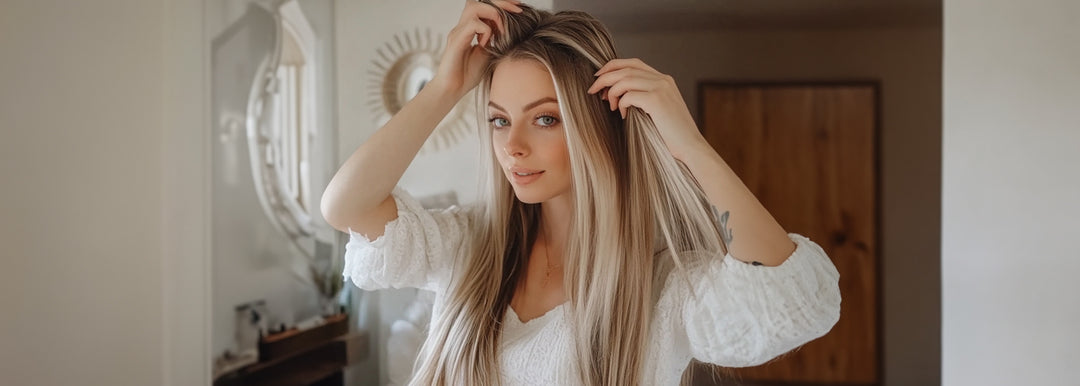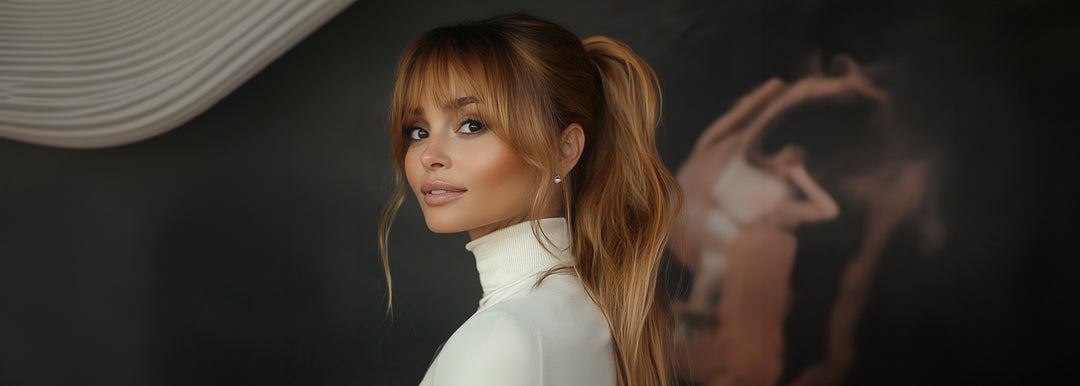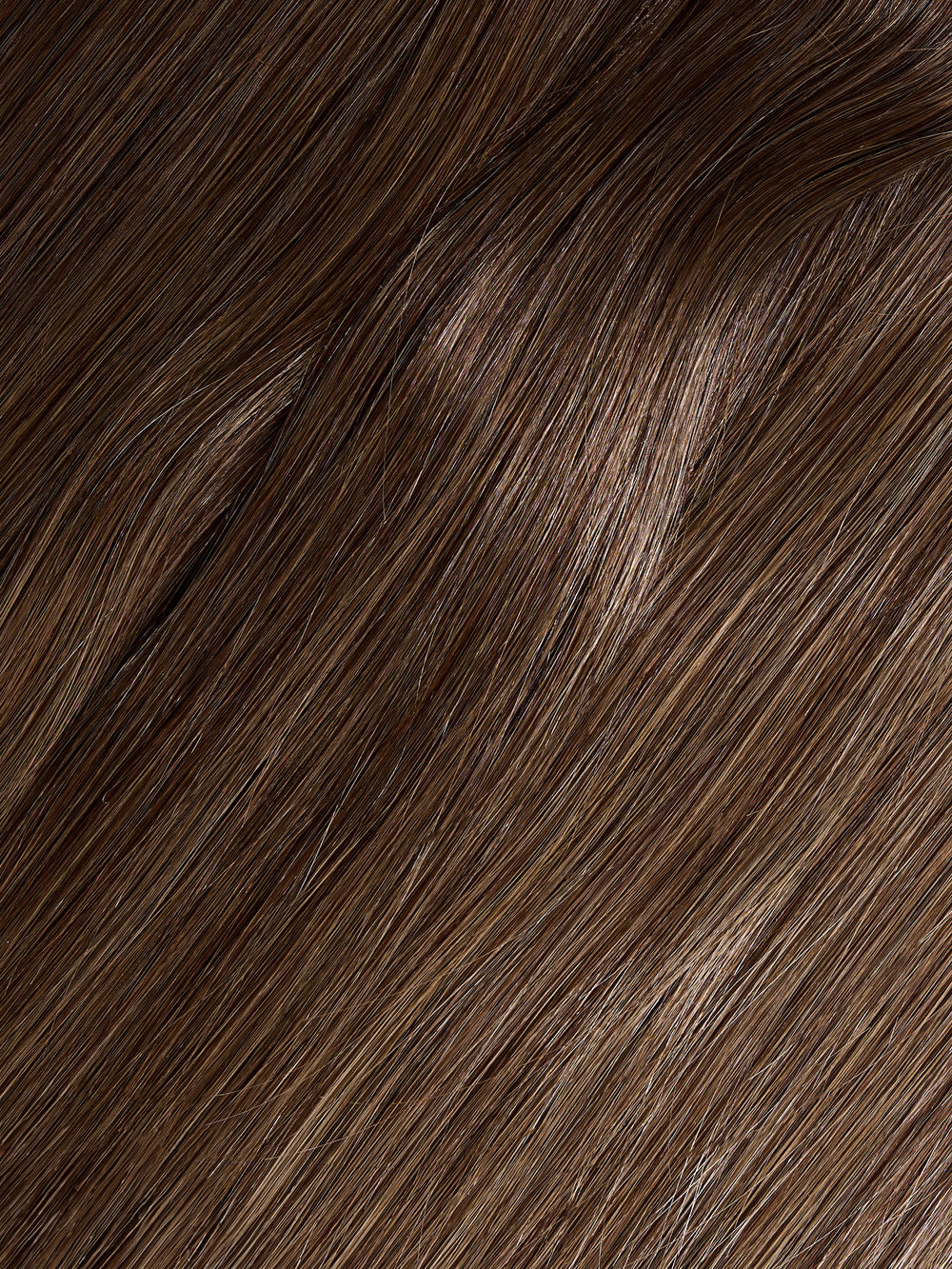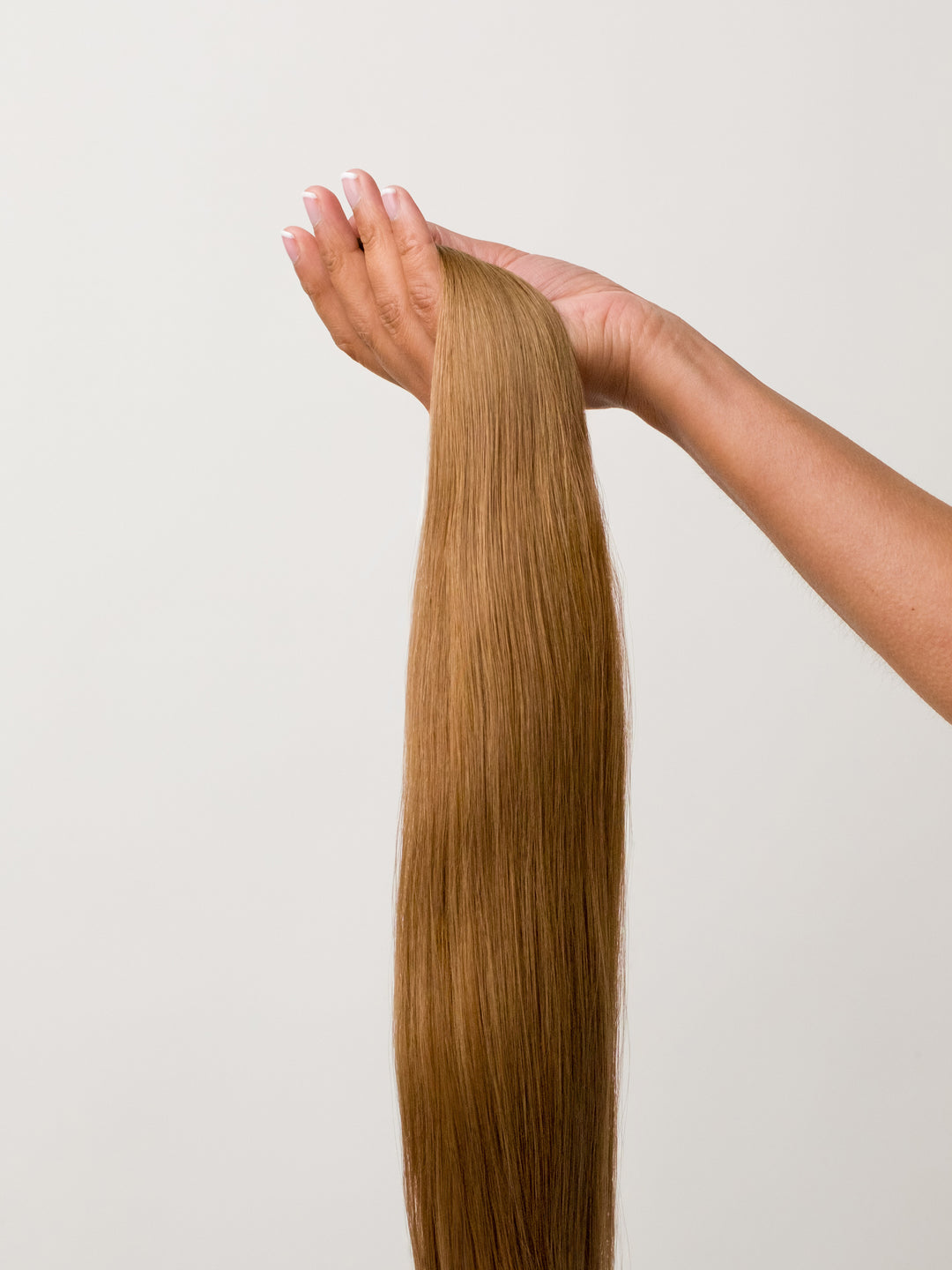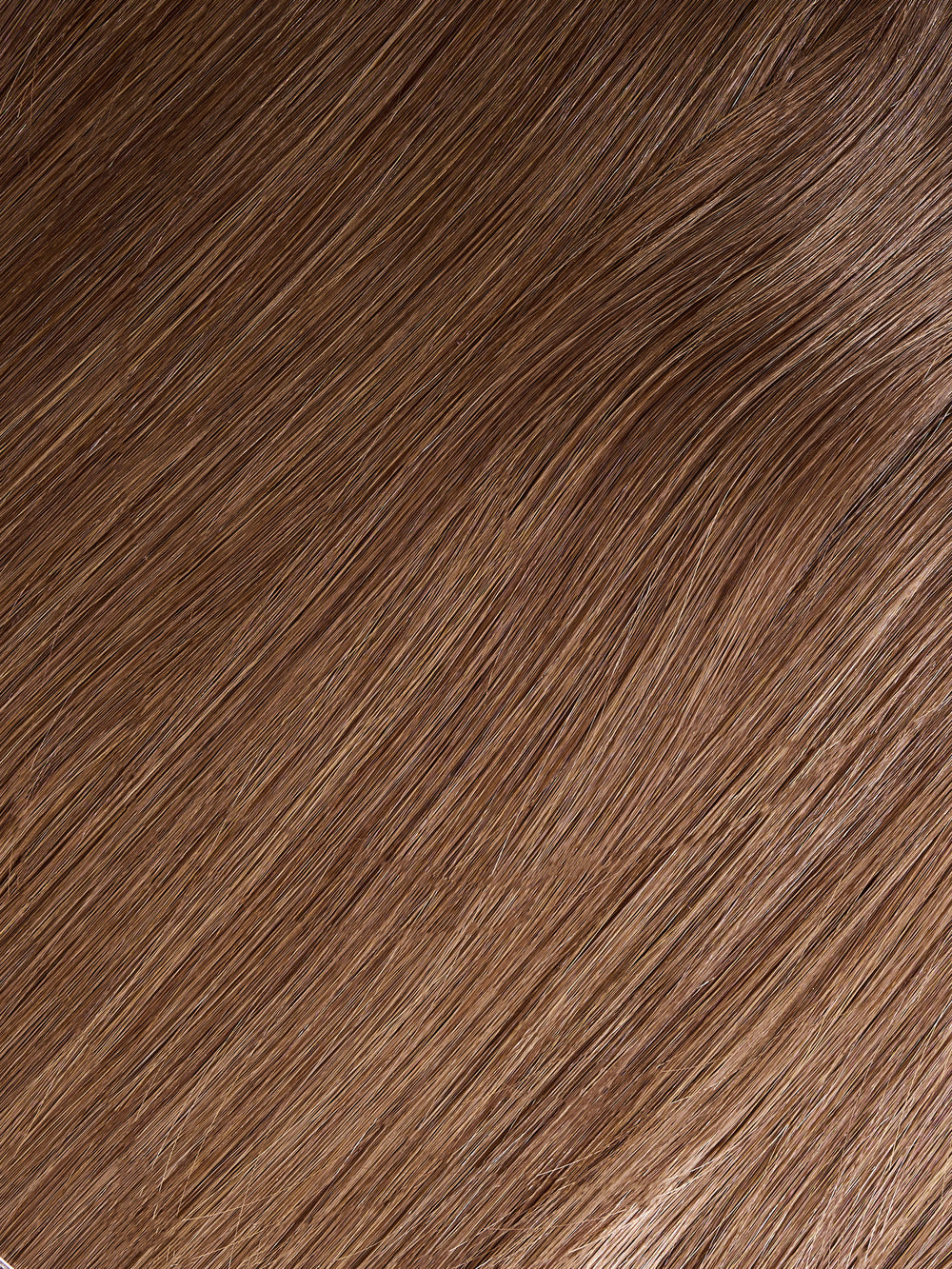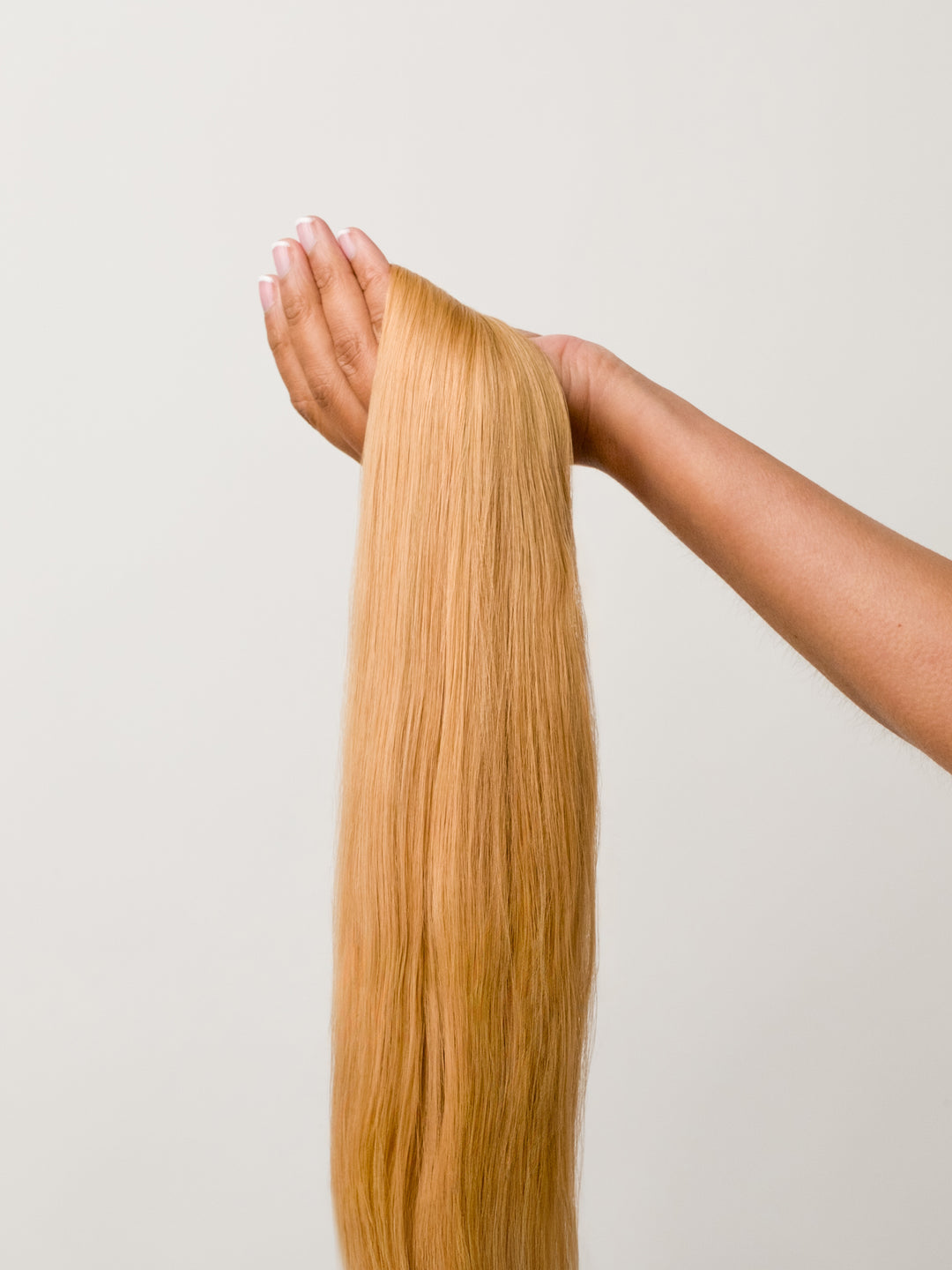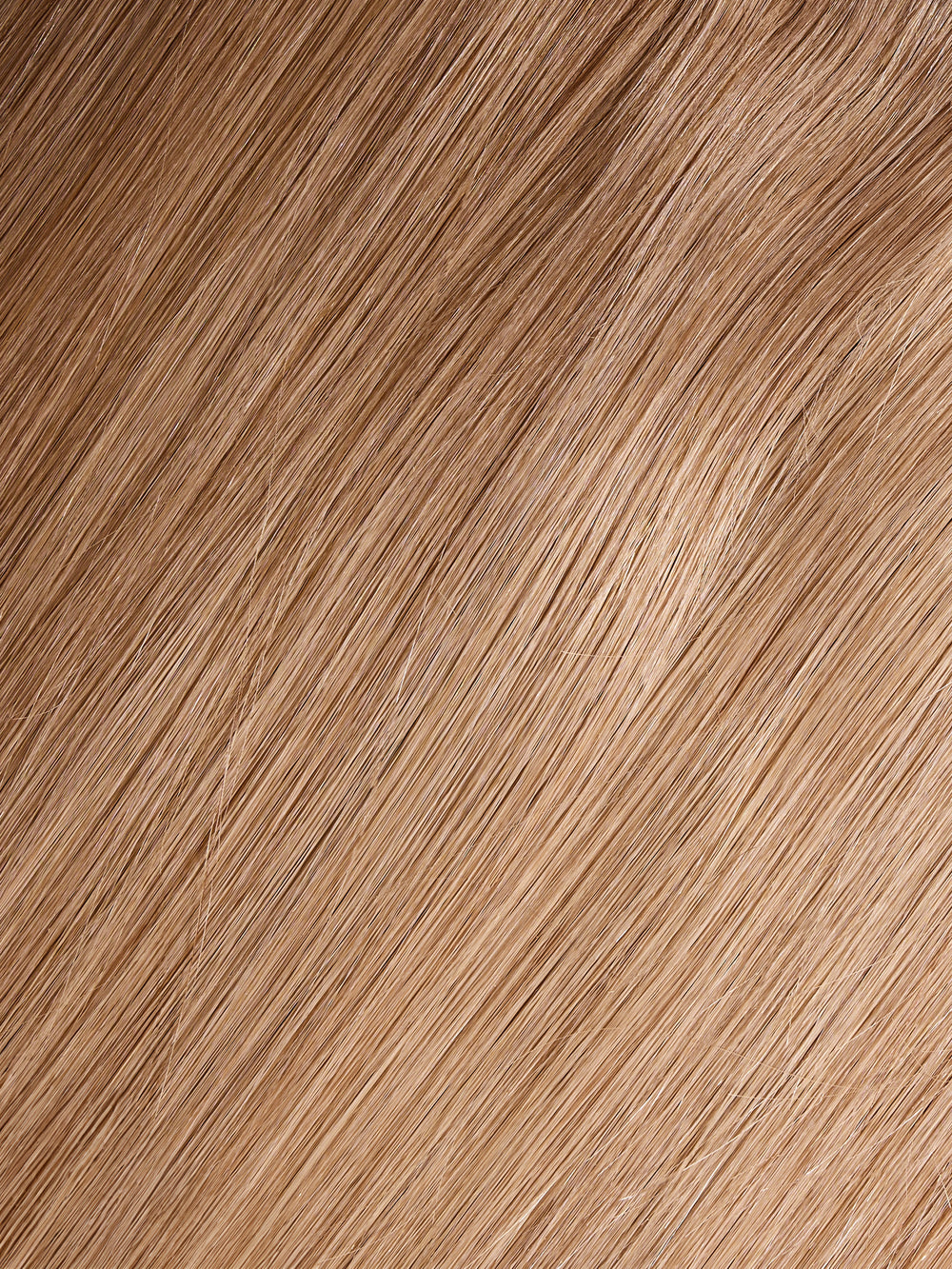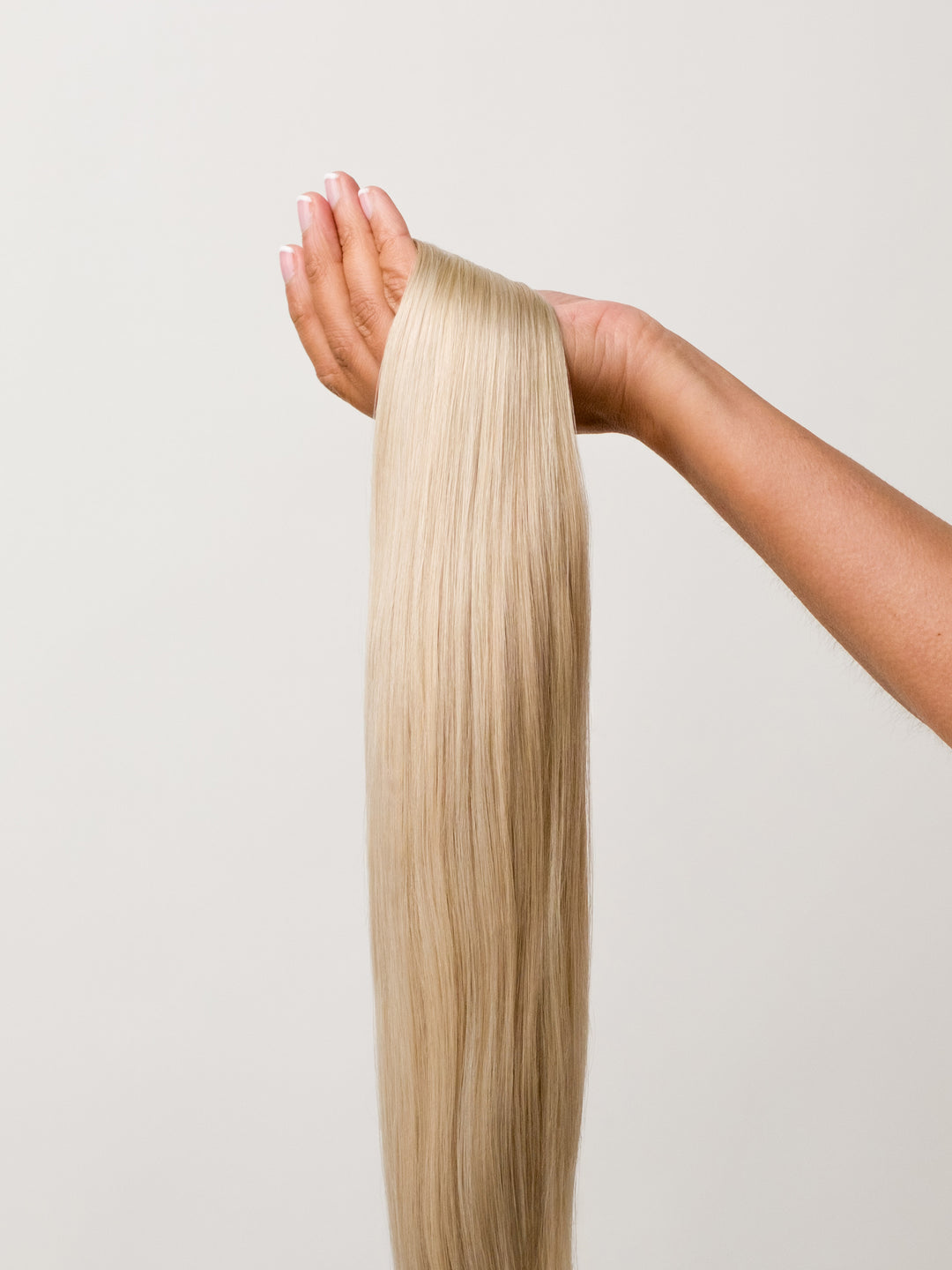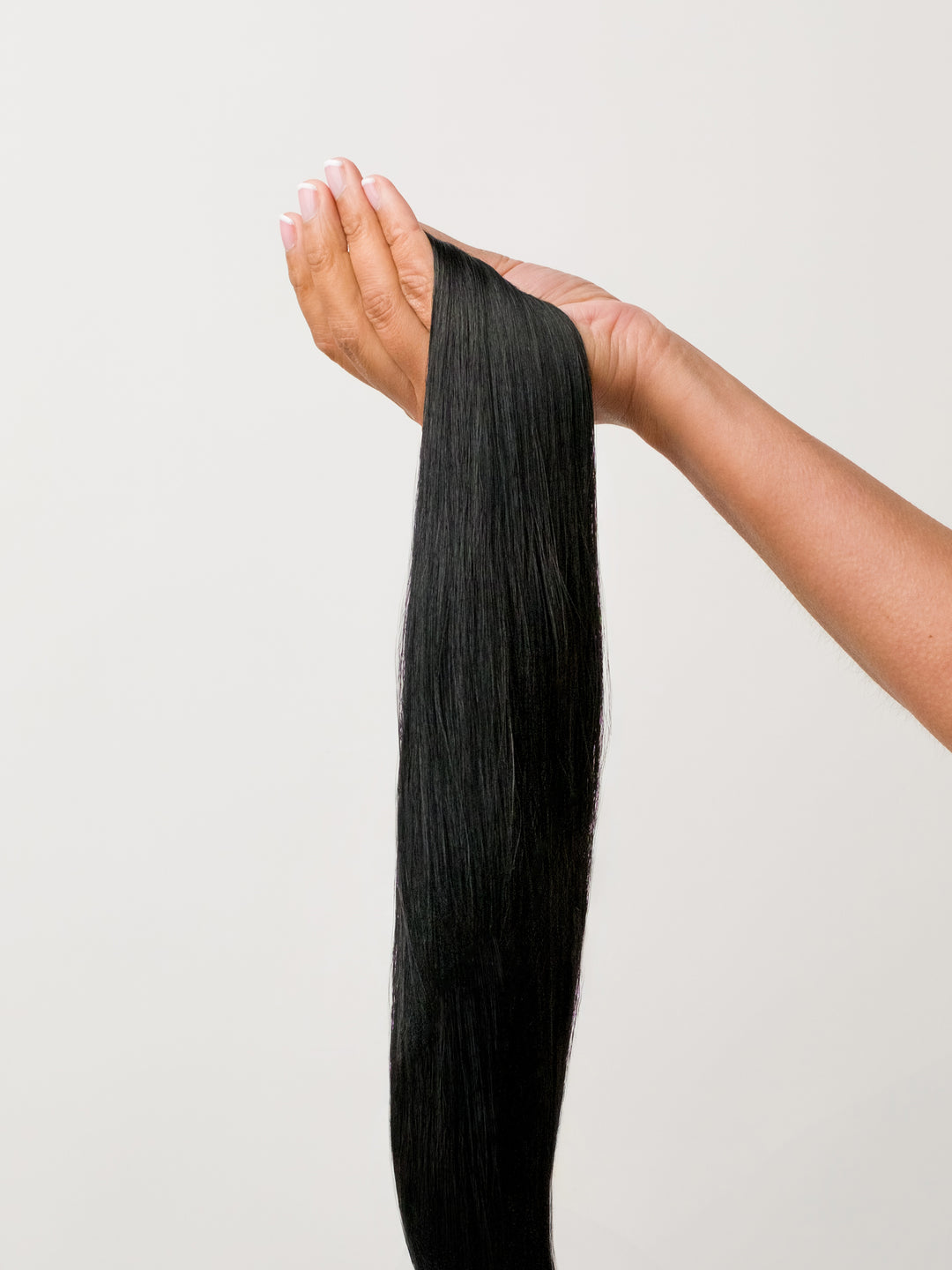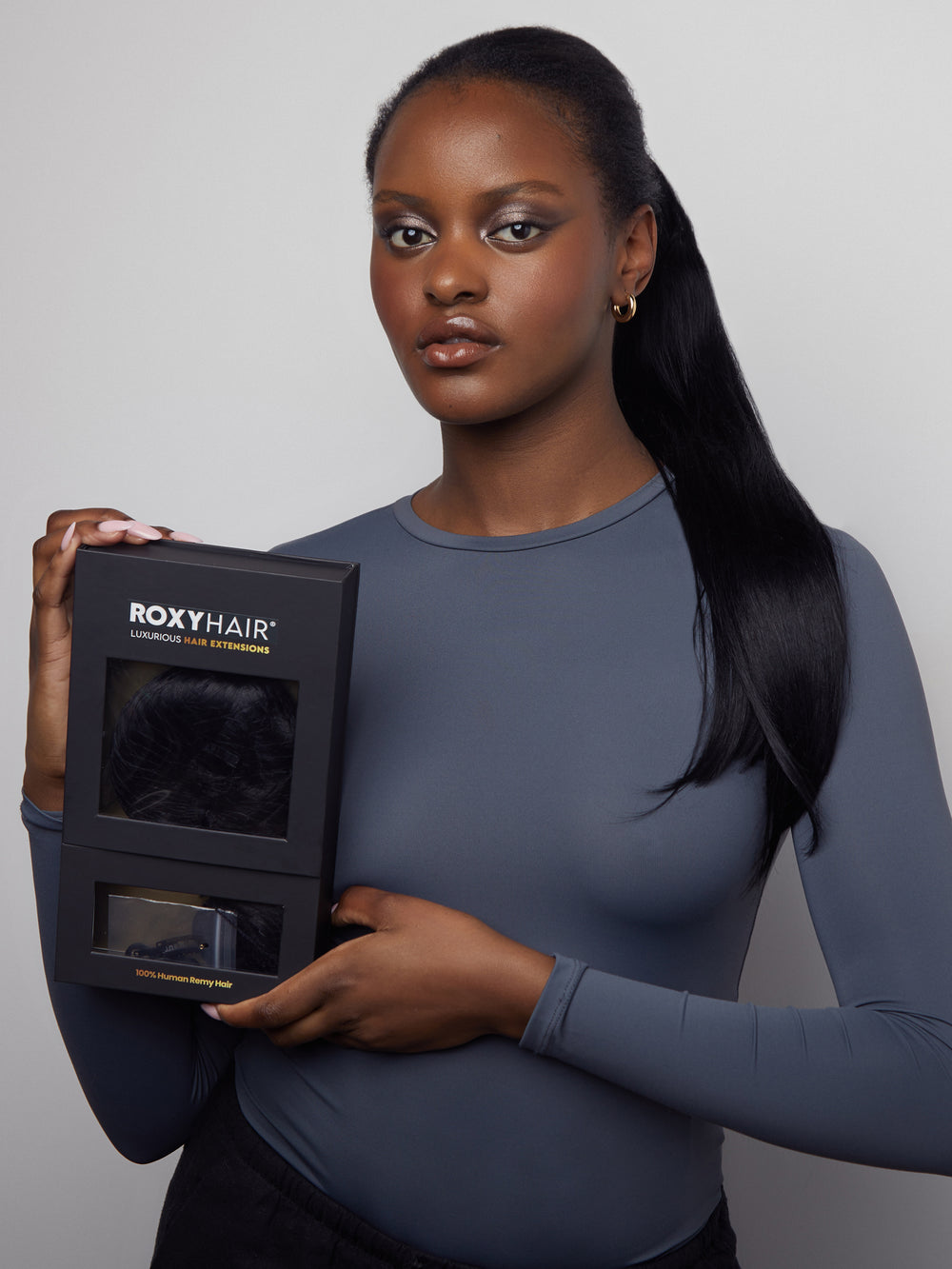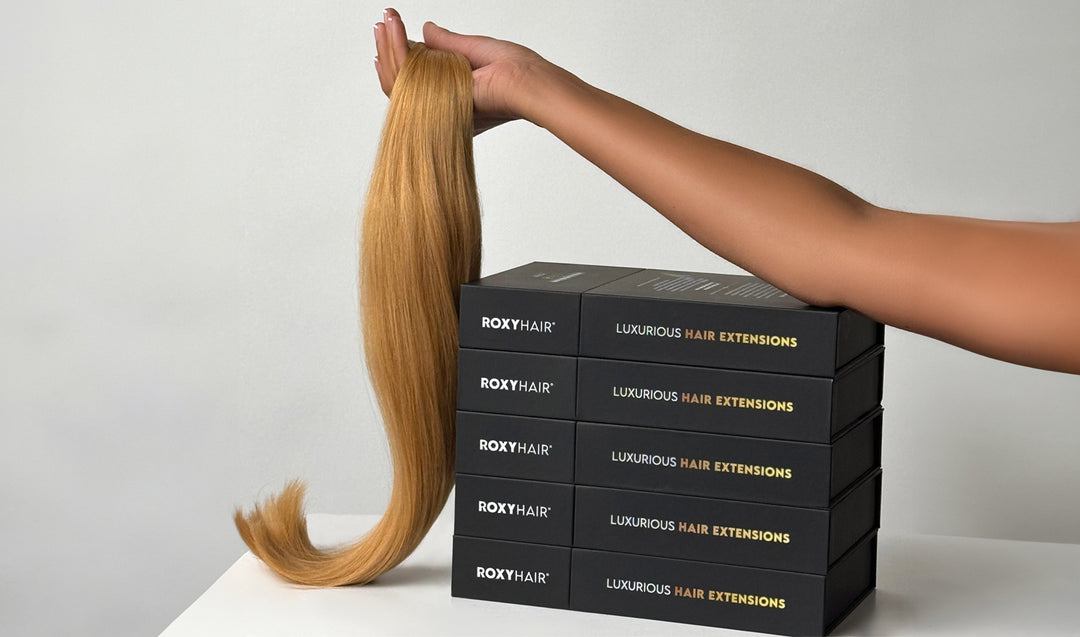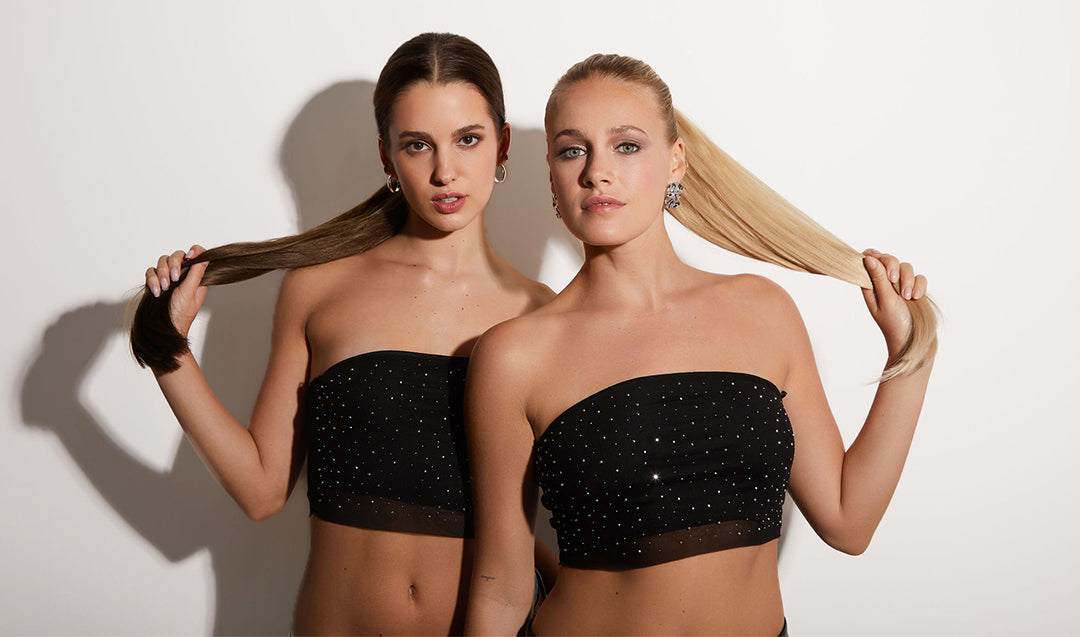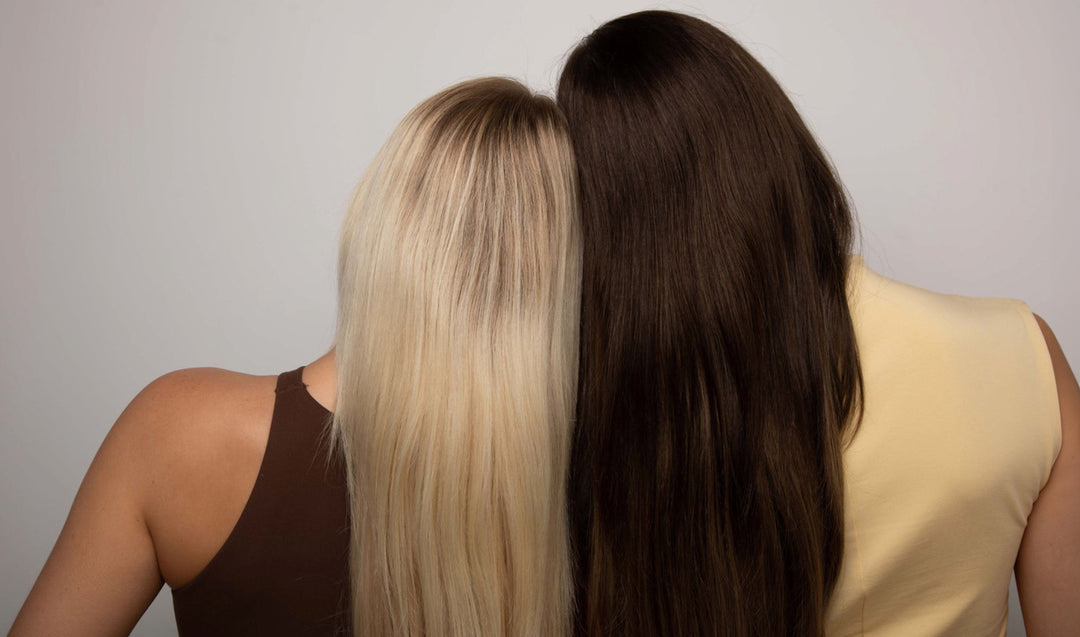Hair extensions have revolutionized the hair industry offering a way to enhance your hairs length, volume and overall appeal. It will give you that bounce in your step and extra confidence everywhere you go.
While there are different extension types out there, but two of the most popular choices are tape-ins and clip-ins made from human hair. The best part? They look and feel like your own luscious locks. It's no wonder people love them.
Choosing between tape in and clip in extensions may initially seem daunting. However fear not. This article will clearly outline the distinctions between the two. If you're unsure, about which option to pick this guide is tailor made for you. But first, let's talk about what tape-in and clip-in extensions actually are.
Key Takeaways:
-
Tape-in extensions are semi-permanent hair pieces bonded to your natural hair with a gentle adhesive tape. A stylist installs them.
-
Clip-in extensions have clips that easily snap in and out of your hair whenever you want. No stylist needed - you can DIY!
-
With tape-ins, you can wear them 24/7 without removing. Clip-ins need to come out before bed to avoid damage.
-
Tape-ins require re-taping every 4-6 weeks. Clip-ins can be reused indefinitely if you care for them properly.
-
Clip-ins give you more versatility to change up styles frequently. Tape-ins limit you to one installed style.
What Are Tape In Hair Extensions?
Tape in extensions are the easy, breezy way to get long, gorgeous hair instantly. Tape ins sound similar to sew ins but they have different purpose. They come as little rows or wefts of hair that are pre-bonded to these teeny sticky strips.
Don't worry, the sticky part is actually made from a gentle medical adhesive - the same kind of stuff used for bandages. Totally safe and damage-free for your natural hair. Each weft has the adhesive covered by a paper strip that you just peel off before applying.
The best thing about tape ins is how stinkin' simple they are to put in and remove. Your stylist separates out a thin row of your hair, sandwiches the weft in there, and presses the adhesive strips together.

What are Clip in Hair Extensions?
Clip in extensions are the fun, commitment-free way to switch up your hairstyle whenever you want. Clip ins from Foxy Hair® is made from 100% remy human hair, just like what's already on your head. But instead of being permanently attached, the hair is secured to little clips.
The best thing about clip ins is that you can style them any way you want - curl them, straighten them, or even color them if desired, just like your natural hair. They blend seamlessly.
It is so easy to install clip ins. All you do is section out your hair, open up the clips, and snap them in wherever you need a little extra length or volume. No glues or sewing needed! Taking them out is just as easy - the clips slide right out in seconds.

Key Differences Between Clip ins and Tape ins
Deciding between clip ins and tape in extensions comes down to what works best for your own lifestyle and preferences. It's a good idea to compare the key differences before choosing and wearing extensions' one type over the other.
Installation Process
-
Tape Ins: These require help from a professional stylist to properly install. The adhesive tapes need to be carefully secured along your natural hair, so it's not really a DIY job unless you're super skilled.
-
Clip Ins: Now these are much more user-friendly. Clip ins can totally be put in and taken out by you at home with no fancy tools or skills required.
Wearability and Comfort
-
Tape Ins: One of the biggest perks of tape ins is that you can wear them 24/7 without taking them out. They're secured flatly against your head, so they're pretty comfy for continuous wear.
-
Clip Ins: While clip ins give you gorgeous, instant length, you'll need to remove them before going to bed. Keeping those clips clamped in overnight can cause some pulling and breakage.
Lifespan and Upkeep
-
Tape Ins: These semi-permanent extensions will need to be professionally re-taped every 4-6 weeks as your natural hair grows out. But otherwise, they're pretty low-maintenance once installed.
-
Clip Ins: With clip ins, you'll take them out and re-clip them in as needed. They don't get "grown out" but you'll need to style them regularly like your own hair.
Versatility and Styling
-
Tape Ins: Since they're semi-permanent, tape ins limit how much you can change up your hairstyle. You'll need to avoid excessive heat styling too.
-
Clip Ins: These has greater versatility. You can clip them in for special occasions, remove them for a workout when you have excessive sweating, re-clip them turned under for an updo - basically whatever your heart desires.
Cost and Budget
-
Tape Ins: Initially, tape in extensions tend to be the more affordable option, especially if you DIY the re-taping between salon visits.
-
Clip Ins: You'll likely pay a bigger upfront cost for high-quality human hair extensions clip in sets. But they can be re-worn indefinitely, making them a solid investment over time.
Pros and Cons of Tape In Extensions
Pros:
-
Quick and easy way to add length and volume instantly
-
More affordable compared to other extension methods
-
Lay flat and blend seamlessly with your natural hair
-
Can style them like your own hair by curling, straightening, washing etc.
-
Reusable if you take care of them properly
-
Great for adding fullness to thin or fine hair
Cons:
-
Must be installed correctly to avoid being visible or damaging hair
-
Require special tools and skill to remove without breakage
Shop Roxy Hair
-
Potential for hair loss, scalp irritation or allergic reactions if not done right
-
Certain hair products can loosen the tape adhesive prematurely
-
Need to be re-taped every 6-8 weeks, which can get costly over time
Pros and Cons of Clip In Extensions
Pros:
-
Temporary safest extensions you can easily clip in and out
-
Style them any way you want - cut, color, curl, etc.
-
Cause less hair damage than permanent or semi-permanent extensions
-
Low maintenance, no stylist needed to apply
-
Good for any types of hair like thin hair
-
Available in many natural-looking hair textures and shades
Cons:
-
Cheap, low-quality clip ins can look unnatural and tangle easily
-
The clips can cause discomfort or headaches if left in too long
-
Good quality, human hair clip in sets can be very expensive upfront

Caring for your Extensions
Here's how to take care of your clip ins:
First up, washing. Don't go tossing those clip in wefts right into the shower. That's a one-way ticket to Tangleville. Instead, give them a nice little soak in some lukewarm water with a super gentle, sulfate-free shampoo. Gently massage it through, being careful around those clips. Follow up with a hydrating conditioner to keep the hair buttery soft.
As for styling, please put down those harsh boar bristles. Invest in quality brushes and tools made specifically for extensions like a wet brush or seamless paddle brush. These will glide through the hair with minimal snagging. And stay away from any products loaded with drying alcohols, especially if you have precious curls.
Now to the part that you don't wear hair extensions. Sleeping in your clip ins is a big no-no - those little clips can cause and create tension pulling overnight. After a long day of slaying, gently unclip and store your extensions properly in their original packaging or a silk bag. This prevents excessive tangles and shedding.
Here's how to take care of your tape ins:
First up, keep those wefts tangle-free by giving them a gentle brush several times a day. Use a quality extension brush or wide-tooth comb, being careful not to yank or pull too hard around the tapes. Sleeping with your hair loosely braided or in a soft updo can also help prevent gnarly knots overnight.
When it comes to washing, you'll want to stick to sulfate-free, gentle shampoos and totally avoid any products with oils, alcohols or ethanol. Those can majorly mess with the adhesive tapes over time. Focus your conditioning from the mid-lengths to ends, steering clear of your roots and tape areas.
Same goes for serums, oil-based products and any heavy styling materials- keep that stuff away from the tapes. A bit of coconut oil on the ends is fine for added shineand moisture though.
Be super gentle with any hot styling too. Always use a thermal protectant, and never go iron-happy directly on those tapes. That's a surefire way to loosen them up before it's time for your reinstall around that 6-8 week mark.
And one often overlooked tape in is workout sessions and swimming. Make sure to give your extensions a good rinse after any sweating or chlorine exposure to prevent premature buildup and slippage.
Conclusion
In conclusions, you just have to ask yourself, "So which extension type fits my vibe - the commitment of tape ins or the freedom of clip ins?"
Tape ins are a semi-permanent solution installed by stylists using adhesive wefts. They lay flat and blend well, but limit your styling flexibility and need frequent re-taping.
Clip ins from Foxy Hair® allow way more versatility. Our 100% remy human hair clips is not time consuming, just use it whenever you want - all on your own timeline. Plus, high-quality clip ins can be reused indefinitely instead of paying recurring costs.
For busy babes who want gorgeous, hassle-free locks, Foxy Hair®'s clip in sets are your bestfriend without the fuss of tape ins,
Browse our human hair clip in collection now.
Frequently Asked Questions (FAQs)
What's the main difference in how they're installed?
Tape ins need a pro stylist to tape little weft pieces to your hair. Clip ins are easy - you just clip them in yourself.
Which lets you change styles more?
Clip ins. You can put them in, take them out, restyle however you want. Tape ins are stuck in one style.
Which is more comfortable for all-day wear?
Tape ins lay flatter, so they're more comfy to wear 24/7. You have to take clip ins out before bed.
Which ones last longer if you take care of them?
Good clip ins can last forever if you treat them right. Tape ins need to be re-taped every 4-6 weeks.
For a tight budget, which is better long-term?
Clip ins. They cost more upfront but you can reuse them. Tape ins seem cheaper but re-taping fees add up.





